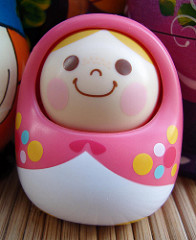People learn mass consumerism throughout their entire lives, but it’s no secret that it’s the messages we learn as a small child that have the most impact on our views and beliefs as adults. While parental guidance and practices like limiting Saturday cartoons and putting kids on a media diet can help, you might be surprised how many subtle things teach children consumerism. In fact, often the toys that children use can teach them to be part of a culture that believes in “buy more, buy more.” This is particularly true for little girls, whose traditional toys tell a story of more and more as a goal. What are the most egregious toys for teaching little girls consumerism and what are some great alternatives? Let’s take a look.
Barbie®: Don’t You Want Her Dream House?
Despite the fact that toymaker Mattel® has tried to make Barbie a better role model for girls by having her reflect a wide range of lifestyles and options, the Barbie brand still comes under attack for many reasons. We’re going to avoid getting into the debate about Barbie dolls, body and self-image because that’s just too big a topic for us! However, it’s unavoidable to realize that the Barbie franchise is teaching girls to consume, consume, consume. Barbie likes stuff. She likes lots of stuff, including wardrobes full of outfits, expensive cars, big houses and lots and lots of accessories. Not only are little girls learning that this is a lifestyle they should emulate, but even as small children they’re being taught that having just one Barbie doll isn’t enough – they need an entire universe of matching pink items and an entire universe of other Barbies. Then, of course, there are the expensive Barbie collector editions that serve no purpose but to add to “stuff.” The reasons to shy away from Barbie are many, but for us the biggest one is about her consumer message (not to mention her carbon footprint).
American Girl® Dolls: They Are Indeed Very American
If you haven’t heard of the American Girl dolls trend yet, then you don’t have a young daughter yet. These dolls are designed to be thought of as “best friends” for their owner and not only do they have an entire slew of outfits to wear, but there are matching outfits for their owners. That’s right. Not only do American Girl dolls teach little girls to covet more and more clothing for their doll, but they also teach little girls to covet more and more clothing for themselves. Not surprisingly, this mega-doll-franchise is also owned by Mattel, who seems to have this business model down to a science.
Celebrity Toys
Walk into the little girls’ section in any toy store and you’ll see dozens of toys associated with celebrities little girls love. For example, at the time of this article, Justin Bieber and Hannah Montana toys for girls are all over the aisles. What is this teaching young girls? It’s teaching them that when you celebrate or admire a celebrity, you should also buy things with his or her name on them. That’s exactly the opposite message of what we want little girls to learn! We want them to find role models who make changes, not who make great plastic dolls. We like to dance to Bieber too, and it’s great if a little girl wants to dance to Bieber. But nobody needs a Bieber doll to truly appreciate his musical talent! Teach your kids to separate celebrities and products so that later they’ll be less susceptible to celebrity endorsement marketing techniques.
Disney, Hello Kitty and Other Collectible Series
Any toy line that is about an entire line of collectibles (that, by the way, is always expanded) is a danger zone for teaching consumerism! Disney, Hello Kitty and toy lines like them are teaching kids that it’s not enough to own one of a certain thing, they should own many of a certain thing. There’s nothing wrong with allowing a child to have a favorite toy line, don’t get us wrong. But try not to allow your child to become obsessed with having everything in a certain toy line.
What are Good Alternatives?
It’s no surprise that the best alternatives to these items are educational toys. Our current obsession are Goldie Blox™, which teach little girls to think like engineers. However, there are dozens of fun options out there. You can also avoid the consumer messaging by selecting “girlie” toys for your young girl that are from local artisans or merchants rather than huge global corporations.
The most challenging part will be the discussion that you’ll need to have when your little girl inevitably says “But all of the other girls have it.” We won’t pretend to give out expert parental advice, but this is a golden opportunity to talk with your child about what makes her special.
The best option may be a middle ground, as it is with most things. Consider letting your child have consumer driven toys – but have open conversations with her about limits or what these toys mean to the planet.
Have another idea about how to teach little girls to rely less on consumerism and more on creativity? Tell us about it on Facebook, Twitter, Pinterest or Instagram.
Photo Credit: Geeky Bird via Flickr





